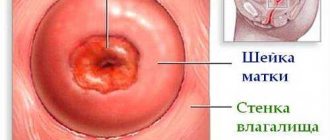Description of the procedure
Curettage, performed with the help of a vacuum, has a wide list of indications, among which are the clearing of the tract at the end of labor, after a miscarriage, abortion, and the elimination of a frozen fetus.
Carrying out vacuum aspiration during a frozen pregnancy implies the elimination of everything that is in the uterine cavity. In this case, extraction occurs together with the superficial region of the organ mucosa.
Before aspiration cleaning of a pregnant woman with a frozen fetus, it is necessary to undergo preparation:
- do an ECG;
- conduct a general and biochemical examination by donating blood;
- determine the degree of blood clotting activity;
- undergo an examination to diagnose the presence of hepatitis B, C, syphilitic infection, human immunodeficiency virus;
- undergo oncocytological examination.
The doctor must examine the cervix before the procedure and also find out whether the woman has taken medications that affect the quality of blood clotting.
To minimize the risk of damaging the uterus during surgery, a woman must comply with several restrictions that apply to the preoperative period:
- 14 days before the procedure, you should not take medications that affect blood clotting activity.
- After the operation is scheduled, sexual contact should be avoided.
- It is necessary to abandon the douching procedure.
- On the eve of the manipulation, you should not use cosmetics necessary for intimate hygiene.
- The use of vaginal tablets and suppositories should be avoided.
12 hours before surgery you must stop eating. This limitation will make pain relief more effective and safer.
Preparing for surgery
Vacuum cleaning of the uterus during a frozen pregnancy is carried out on an empty stomach, after at least eight hours of fasting. Before the operation, the woman is examined by a gynecologist to make sure there are no possible contraindications, and by an anesthesiologist to determine the anesthesia.
After examining the patient, doctors decide to perform surgery. In cases of detection of genital infections, inflammation of the pelvic organs, or damage to the uterine mucosa, the cleansing will have to be canceled.
Before the operation, the woman will have to pass:
- blood and urine tests;
- hCG level study;
- smear to detect infections;
- blood test for group and Rh factor;
- bacteriological culture;
- blood to determine coagulability (coagulogram);
- ECG.
After the studies, the patient must sign consent for the operation.
Two weeks before the cleansing, the woman should stop taking all medications that may affect blood clotting. If the operation is planned for the near future, then at least 2 days before it you need to:
- avoid using intimate hygiene products;
- suspend sexual activity;
- stop douching;
- stop using medications.
Symptoms of frozen pregnancy
Embryo death without clinical signs can occur in the early stages of pregnancy. Later, a stop in fetal development is manifested by the following symptoms:
- the appearance of sharp pain in the abdomen;
- presence of spotting bloody discharge;
- absence of toxicosis during frozen pregnancy;
- cessation of breast pain;
- decrease in basal temperature;
- the appearance of general weakness.
In later stages, the cessation of fetal development is accompanied by a lack of fetal movement. If you suspect that your pregnancy is fading, you should immediately consult a doctor. Diagnosis of this condition is carried out in several ways:
- using a blood test for hCG (its level decreases);
- at a gynecological examination (the size of the uterus does not correspond to the gestational age);
- using ultrasound (absence of the baby’s heartbeat).
Vacuum cleaning during a frozen pregnancy is prescribed only after an accurate diagnosis of fetal development arrest.
When to cleanse after a miscarriage
After examination, diagnosis and assessment of all individual characteristics, selection of the optimal design of dentures, you may be offered one or another method of prosthetics. From the pictures everything is fine. The dentist recommended contacting an orthopedist to check the occlusion and supercontacts. And only after ruling out this diagnosis, you should sign up for diagnostics and correction of occlusal relationships. Our clinic uses several options for general anesthesia, including the use of medical gases. If there are indications and referrals, treatment is provided to children free of charge. To carry out treatment using general anesthesia, you must have:
I had a miscarriage at 5 weeks. The child was wanted, we tried to get pregnant for 4 months. It all came out on its own, do the cleaning.
Causes of fading
There are many reasons that cause pregnancy to fail. This condition can be caused by:
- genetic diseases of the embryo; bladder
- exacerbation of infectious diseases leading to the death of the fetus, which are manifested by the presence of vaginal discharge of a yellowish, greenish, brownish tint;
- ectopic pregnancy;
- hormonal imbalances;
- carrying out several abortions before pregnancy;
- taking certain medications;
- bad habits.
These factors can cause pregnancy to fail at any stage. Other reasons for the cessation of fetal development differ depending on the trimester.
If the embryo has stopped developing for any of these reasons, a vacuum abortion or termination of pregnancy must be performed. And after the procedure, you should undergo the examination necessary to diagnose the condition.
What are the possible consequences in the postoperative period?
Cleaning the uterine organ using a vacuum method, as already mentioned, is a gentle method of performing surgical interventions of this type. However, it should be noted that after a vacuum procedure for cleaning the uterus, various complications can occur. These include:
- Perforation of the cervical spine or the entire body of the uterus;
- Inflammatory diseases of the reproductive organs that accompany strong discharge;
- Hormonal disorders;
- Disruptions in the menstrual cycle;
- Secondary infertility.
After three to five days, patients experience spotting, which women mistake for the menstrual cycle. In fact, such discharge is quite normal after undergoing a vacuum-type procedure, since hormonal changes occur in the body. Full menstrual flow should begin, as a rule, after about 30 days and may differ from usual (for example, it will be less abundant, etc.).
How does the procedure affect the subsequent pregnancy?
It is known that after undergoing a cleansing, there is a risk of certain complications that affect conception and the entire period of gestation. First of all, the patient may develop the formation of adhesions, obstruction of the fallopian tubes, as well as other conditions that reduce the chances of conception to a minimum. If during a surgical operation of this kind the cervix of the uterine body is injured, this can lead to isthmic-cervical insufficiency and, accordingly, to miscarriage.
Gynecologists recommend planning conception at least six months after surgery to clean the uterus. Do not forget that pregnancy that occurs before this period can result in spontaneous miscarriage or the death of the child in the womb. Before the process of conception, a woman must undergo a full examination by an obstetrician-gynecologist.
In this video you can see additional information about cleaning the uterus:
To avoid serious complications after cleaning, you must follow the following recommendations from doctors:
- Avoid sexual relations for at least a month;
- Avoid overcooling and heavy physical exertion;
- High temperatures (saunas, hot baths, etc.) should be avoided;
- It is necessary to strictly adhere to sexual hygiene.
Doctors also prescribe antibacterial pharmacological substances to prevent complications such as infections. To exclude pregnancy and restore hormonal levels, you need to take contraceptives containing hormones. If heavy bleeding occurs, you should inform your doctor about it without delay. After two weeks, you should come for a scheduled appointment with a gynecologist and undergo an ultrasound examination.
The physiological characteristics of a woman are such that her body can become pregnant every month, of course, if it is healthy and there is a sexual partner. Sometimes the understanding that fertilization has occurred comes only after a month, along with missing menstrual flow. Abortion or baby? Almost every woman of childbearing age faces this difficult choice. And various circumstances force her to make a decision not in favor of the unborn baby: age, financial or social status, personal beliefs or the absence of a father.
Be that as it may, we have to find the most harmless ways to get rid of the fetus, which is vacuum aspiration. What is it, and is it as safe as paid clinics claim?
Indications for the procedure
By cleaning the uterus with a vacuum, you can remove all the insides of the organ along with its upper mucous layer. There are several indications for this procedure:
- bubble skid;
- a serious disease in the embryo that was diagnosed before the 12th week;
- hematometer;
- spontaneous incomplete miscarriage;
- the presence of placental remnants after childbirth or cesarean section;
- heavy bleeding;
- fetal freezing;
- examination of the uterine microflora for the presence of possible infections that threaten the life of the child.
There are also contraindications to miscarriage, so the advisability of this procedure is determined only by the attending physician.
Treatment
Therapeutic methods of influencing a woman’s reproductive organs always depend on the reasons that caused the pregnancy complication. For example, in case of hormonal imbalance, it is important to undergo a full course of research and only then determine hormone therapy methods. If there is a focus of infection in the birth canal or the uterus itself, it is important to initially eliminate it and then relieve secondary symptoms.
If an infection is suspected, it is important to correctly determine the source of the problem (culture in the laboratory) and subsequently prescribe an effective narrow-spectrum antibiotic.
How long to stay in the hospital
If surgical curettage of a frozen pregnancy is carried out as planned, then complications, as a rule, are not observed. The average length of stay in the hospital after surgery or a miscarriage is 12 hours. As a rule, this time is enough for the woman to completely recover from anesthesia. At the same time, the birth canal is examined and the abdomen is palpated.
How to recover
The recovery process after cleaning depends on the duration of the frozen pregnancy. An important factor is the emotional and psychological state of a woman. Often, the help of a psychologist is required to help get out of stress and determine priorities after cleansing. After all, life does not end, and you need to understand that this is only an annoying disappointment on the path to maternal happiness.
The following procedures are used for recovery:
- psychotherapy;
- antibacterial therapy;
- anti-inflammatory procedures;
- Ultrasound monitoring;
- control of analyzes;
- histology;
- hormone replacement therapy (prescription of contraceptives).
How is the procedure carried out?
The operation is performed under anesthesia to prevent the woman from experiencing pain. The absence of anesthesia is allowed only after childbirth, when the cervix is dilated and the organ is dilated.
After anesthesia is administered, the intimate area is disinfected, the cervix is dilated, and then surgery is performed.
There are several ways to carry out this procedure:
- Manual cleaning. This is done using a special syringe. This method involves suctioning out the contents of the uterus, causing the embryo to tear off. The process is regulated by the doctor himself.
- Machine cleaning. It involves the use of a special pump to extract the fetus.
The procedure lasts no more than a quarter of an hour. Additionally, we recommend that you familiarize yourself with information about the timing of a vacuum abortion and the intricacies of its implementation.
Operation
Vacuum cleaning of the uterus during a frozen pregnancy can be carried out using two methods:
- Manual. This technique uses a syringe, which the doctor uses to suck out the contents of the uterus.
- Machine. To carry out this operation, a special pump is used.
In both types of procedures, the woman is given anesthesia, after which the genitals are treated with an antiseptic. The doctor then inserts a speculum into the vagina and, if necessary, administers a second injection of anesthesia into the cervix.
Using a special device, the distance to the uterus is measured. If the cervix is not dilated enough, a dilator is used. Only after this is a tube inserted, which sucks in tissue and cleanses the uterine cavity. Then the patient is injected with drugs that shrink the endometrium. The duration of the entire procedure does not exceed 15 minutes.
As a rule, doctors prefer general anesthesia, because with it the patient will not feel anything.
But the disadvantage of such anesthesia is the long recovery from it (at least 2 hours).
After vacuum cleaning, the embryo is sent for research to determine the causes of pregnancy failure.
Rehabilitation and possible complications
After the curettage of the frozen fetus is completed, the woman should monitor her body temperature and the nature of vaginal discharge after vacuum aspiration twice a day for 14 days. After the specified period, you need to see your doctor in order to undergo examinations after the first frozen pregnancy.
The first step is an ultrasound. This is necessary in order to know for sure that there are no fetal remains left in the uterine cavity.
In addition, tests are prescribed after a frozen pregnancy:
- hormonal examinations;
- diagnostics of the state of microflora, the presence of infectious lesions of the reproductive system;
- study of the histology of the epithelial uterine area.
Such studies will help minimize the risk of fading in the baby’s development during the next pregnancy.
Also during the rehabilitation period, a woman needs to take vitamins and minerals. This is required to strengthen the body. The doctor may also prescribe a course of antibiotics to reduce the likelihood of developing an inflammatory process. Hormonal drugs are recommended to restore background and prevent pregnancy.
When is aspiration of the uterine cavity using the vacuum method prescribed?
As already mentioned, cleaning the body of the uterus can be carried out for diagnostic purposes: in cases where it is necessary to take the endometrium for biopsy analysis. You can also highlight the following indications leading to vacuum aspiration:
- Termination of pregnancy that is unwanted (but only if the period is not more than five weeks);
- Incomplete spontaneous abortion (miscarriage);
- Termination of pregnancy in case of death of the fetus or its pathological development;
- Parts of the fertilized egg remaining after a surgical or medical abortion;
- Termination of pregnancy if there are contraindications to continuing the pregnancy;
- Placental tissue that remains in the uterine cavity after delivery, either vaginally or by cesarean section;
- Dysfunctional bleeding from the vaginal cavity and bleeding from the uterus;
- Detection of fluid or blood accumulation in the uterine organ (hematometer and serosometer).
Why is uterine body cleansing prescribed during the postpartum period?
Particular attention should be paid to the reasons why cleaning of the uterine cavity is prescribed after delivery. Many women are afraid of this procedure, actively resisting it. Vacuum aspiration is carried out if, after a comprehensive examination of the patient’s condition, the presence of placental remains, fetal membranes or blood clots is revealed in the uterine cavity.
It is important to know that the presence of foreign tissue in the uterus is a breeding ground for a variety of microorganisms, and their reproduction, as a rule, leads to the development of inflammatory and purulent processes. Also, organic debris does not allow the uterus to contract completely, which leads to the development of quite serious complications after delivery.
In what cases is the procedure contraindicated?
Despite the wide range of applications of vacuum cleaning, there are also contraindications for its implementation. Thus, vacuum cleaning is not performed in the following cases:
- If the gestation period is more than five weeks;
- If the presence of defects in the development of the uterus is detected;
- If there are diseases of the reproductive organs of the inflammatory type (which are primarily indicated by specific discharge);
- During pregnancy developing ectopically;
- In case of detection of infectious diseases;
- With neoplasms of the uterus, leading to deformation of its cavity (for example, with fibroids);
- If the previous termination of pregnancy was less than six months ago.
You can learn more about this case of ectopic pregnancy from this video:
Cleaning the uterus
Frozen pregnancy is not a rare occurrence. According to the observations of specialists, in 10% of all cases the fetus dies for one reason or another. After making an accurate diagnosis, the doctor must promptly rid the uterine cavity of the dead embryo.
Vacuum aspiration in the early stages: consequences and features
Vacuum cleaning during a frozen pregnancy is carried out exclusively in the early stages. Mostly up to 12 weeks. The procedure does not pose any serious threats or consequences. It is performed under general or local anesthesia.
- On a gynecological chair, the patient, undressed from the waist down, is given anesthesia to eliminate pain.
- The genitals are disinfected.
- The obstetrician inserts a speculum into the vagina.
- An aspiration tube connected to an electric aspirator is inserted into the uterine cavity.
- Under the influence of a vacuum, the fertilized egg will be torn away from the uterine cavity and brought out.
- This completes the procedure.
The consequences of vacuum aspiration are gentle surgical curettage. However, consequences are possible.
Among the most serious are:
- hormonal imbalance;
- infertility;
- menstrual irregularities;
- inflammatory processes of the internal genital organs;
- incomplete removal of the fertilized egg;
- bleeding.
To avoid serious consequences, a woman after cleansing should adhere to the basic recommendations of her doctor. Among them:
- abstain from sexual activity for 30 days;
- do not lift heavy objects;
- dress warmly in cold weather;
- try to avoid visiting a sauna or steam bath;
- maintain personal hygiene.
Minor bleeding is possible for two weeks after the procedure. But if after the allotted time the discharge does not stop, you should contact your gynecologist.
Risks and consequences of surgery
Despite the versatility of surgical intervention, it is not always possible, because there are always risks that pose a threat to the patient’s health.
The procedure is prohibited in the following cases:
- Poor blood clotting. In this case, there is a high risk of severe bleeding.
- Inflammation of the internal genital organs. During the procedure, there is a risk of infection of the reproductive system.
- Inflammatory and infectious diseases (for example, pneumonia). A woman’s immune system is greatly weakened, so there is a risk of inflammation or infection in the uterine cavity.
Like any surgical intervention, curettage can lead to unpleasant consequences:
- bleeding;
- inflammatory processes of the pelvic organs;
- formation of adhesions in the uterine cavity;
- perforation of the walls of the uterus due to its trauma;
- infertility.
What facial cleansing can be done for pregnant women?
There are several safest facial cleansing techniques that can be used by pregnant women.
Oxygen
Gentle cleansing with oxygen will help:
- activate collagen production;
- give your face a natural, healthy glow;
- saturate the epidermis with vitamins and antioxidants;
- accelerate cell regeneration.
Cleaning rules:
- removing impurities from the face;
- treatment with an oxygen mixture that penetrates into the deep layers of facial skin;
- application of a health serum containing vitamins and natural herbal extracts.
This atraumatic procedure has no side effects, there is no redness or discomfort after it, and you can immediately use decorative cosmetics.
Vacuum
This technique is suitable for those with oily and normal skin types and is contraindicated in the presence of rosacea, peeling and severe inflammation on the face.
Cleaning is carried out using a drainage device that has several types of attachments, which cleans the pores, removes blackheads and excess subcutaneous fat. The device has the following effects:
- activates the blood circulation process;
- normalizes metabolic processes and rejuvenates;
- saturates the facial skin with oxygen and tones it;
- eliminates puffiness, shallow wrinkles, scars and age spots.
The main disadvantages of this method are the rapid contamination of pores and the lack of effectiveness when the skin is heavily soiled, since the vacuum removes dirt only from the upper layer of the epidermis.
Ultrasonic
Ultrasound cleansing accelerates metabolic processes at the cellular level, has a tonic and moisturizing effect, and eliminates excess sebum.
Ultrasonic cleansing of the facial skin is carried out in several successive stages:
- Preliminary cleansing of the epidermis with tonic or lotion to remove residual cosmetics and impurities.
- Light facial massage necessary to enhance sensitivity to ultrasound.
- Applying gel to steam and open pores.
- Basic ultrasonic cleaning.
- Applying a mask.
The downside of the procedure is the superficiality of cleansing, the need for frequent repetition of sessions to obtain the desired result, and the lack of a rejuvenating effect.
In addition, many women during pregnancy cannot afford ultrasonic facial cleansing, since this method has a higher cost than mechanical or vacuum cleansing.
Expert opinion
Elena Apostolyuk
Cosmetologist
You cannot resort to such cleansing if you have moles on your face, diseases of the oncological or infectious type, as well as diseases of the cardiovascular system.
Manual
Mechanical cleansing is used when deep cleansing of the epidermis is necessary - to remove sebaceous plugs, clogged pores and acne. The main advantage of this type of cleansing is the absence of chemicals, which minimizes the risk to the baby’s health. This procedure will help:
- even out the shade, give it softness and smoothness;
- eliminate wrinkles, sagging and unevenness of the epidermis;
- normalize blood circulation and improve facial skin tone;
- cleanse pores of impurities and normalize the functioning of the sebaceous glands.
Manual cleaning has a number of disadvantages:
- The procedure is painful. Cleansing is carried out manually or using a metal spatula; it is not recommended for women with a low pain threshold, especially in the first months of pregnancy - pain and associated overexertion can lead to an increase in uterine tone.
- Long recovery period. The first days after cleansing, redness is observed; during this time, you should not use cosmetics, scrubs and cleansers that contain alcohol.
- Possible complications. Carrying out the procedure by an unqualified specialist can cause scars, bruises and severe swelling.
- Refusal to use a pore tightening product after the procedure and failure to follow the recommendations of a specialist in caring for the epidermis often leads to rapid clogging of the pores or the appearance of inflamed acne.
How does curettage occur: does it hurt?
Before cleaning the uterine cavity, the patient must pass the prescribed tests to exclude possible complications that may arise during the operation.
The intervention will be carried out in a gynecological office under general anesthesia, so there is no pain at all.
- The woman takes off the lower part of her clothes and sits on the gynecological chair.
- Anesthesia is injected into the vein and after the medicine begins to take effect, the doctor installs a dilator in the vagina.
- The genital organs (both internal and external) are disinfected with a special solution.
- A substance is injected that promotes contraction of the uterus to shed the mucous layer of the uterus (endometrium) and simplify the procedure itself.
- A curette (surgical spoon for curettage) is inserted into the dilated canal of the uterus, with the help of which the uterus is cleaned of the dead fetus and the upper layer of the endometrium.
- After removing the biological material, the doctor will take out the instrument and take the patient to the room so that she can recover from anesthesia.
Why is vacuum cleaning used?
For whatever reason, a frozen pregnancy occurs, the uterus needs timely cleaning. Otherwise, sepsis may develop or the process of intoxication will begin.
Vacuum cleaning of the uterus during a frozen pregnancy is the best option. It is carried out under the supervision of a doctor who controls the process and makes sure that no parts of the embryo remain in the uterine cavity.
Another type of cleaning is scraping. To carry it out, a curette is used, with which the doctor scrapes off the fertilized egg. When curettage, it is necessary to undergo general anesthesia, since the procedure is considered very painful. After the operation, the woman recovers from anesthesia within several hours.
In the case of curettage, complications may arise in the form of remnants of fetal parts or perforation of the uterine wall. And then in any case you will have to carry out vacuum cleaning.
What to do in case of late pregnancy miscarriage
From 9 to 42 weeks of pregnancy, the cessation of fetal development is called antenatal or intrauterine fetal mortality. In the later stages, an abortion is performed. The doctor induces labor artificially.
- A puncture of the amniotic sac is performed and amniotic fluid is removed.
- Next, the patient is given antiprogesterone (Mifepristone) and prostaglandins. Over time, the medications cause contractions.
- The cervix dilates and the fetus comes out.
- In the second trimester, artificial birth occurs without difficulty, since the fetus is still small.
It all ends with curettage of the uterine cavity under general anesthesia. This part of the procedure is mandatory, since the immature placenta may not completely detach from the uterus.
Many women are interested in the question, until what period is an abortion performed?
No matter what scientific terms are used to replace simple words when describing the process of abortion, abortion is the murder of an unborn child. In our country, abortion is legally justified only in cases of rape, death of the child's father during pregnancy, deprivation of parental rights, threat to the mother's life and fetal pathology.
An abortion can be performed up to 22 weeks of pregnancy.
Starting from the eighth week of gestation, the baby’s nervous system begins to form. On the sixteenth day, the baby makes the first more or less conscious movement - he begins to respond to sounds.
Termination of pregnancy performed at a later stage is called premature birth.
.
Termination of pregnancy up to 12 weeks
is called early abortion and this procedure is performed at the request of the woman.
Read more HPV 68 forum
Before pregnancy 6 weeks
You can have a medical abortion (using pills).
Termination of pregnancy at a later stage, more than 6 weeks, can only be performed through surgical intervention (so-called curettage).
If the gestation period exceeds 12 weeks, an abortion can be performed only in the presence of serious medical (for example, the presence of intrauterine pathology of the fetus, decompensated diseases of the mother - epilepsy, diabetes mellitus) or social indications (rape, death of the husband, imprisonment).
remember until what time an abortion is performed , because terminating a pregnancy at a longer period is very dangerous.
Recently, termination of pregnancy (abortion) is increasingly performed by medication.
At the same time, medical abortion has a limited period.
This manipulation can be performed up to 49 days (up to 6 weeks of pregnancy), if you count from the first day of the last menstruation.
It is during this period that the fertilized egg is still weakly attached to the uterine cavity, so taking certain medications promotes increased contractility of the uterus and rejection of the fertilized egg.
If you perform a medical abortion and do not delay the timing , this has some advantages for the woman:
- there is no mechanical damage to the uterus
- no need for anesthesia
- infection is prevented from entering the uterine cavity.
For young girls who plan to have children in the future, medical termination of pregnancy is the method of choice.
Yes, and psychologically it is much easier to endure termination of pregnancy with the help of a drug than agreeing to surgical termination of pregnancy.
If you have already decided to have a medical abortion, do not delay the deadline, because the slightest delay can reduce the effectiveness of this method to zero.
Consult a specialist doctor in time, take care of your women's health!
What problems can arise with a medical abortion?
Firstly, the pregnancy may not be terminated. In this case, it can no longer be saved for medical reasons. A mini-abortion is performed. Secondly, there may be very heavy bleeding. In this case, too, sometimes you have to resort to surgery. Thirdly, it can be very painful, you can feel nauseous, and your blood pressure increases.
The undoubted advantage of this method is the absence of surgical intervention, and therefore the possibility of uterine injury and infection.
Recovery and rehabilitation
A frozen pregnancy brings a woman not only physical, but also psychological trauma. The expectant mother will have to get used to the thought of losing her child for a long time. Therefore, at first, immediate relatives should provide support and care. Recovery of the body after the procedure will depend on the normalization of menstruation. A healthy lifestyle and proper nutrition will be the best rehabilitation after anesthesia.
One of the most important aspects of rehabilitation is the restoration of the endometrium (the mucous membrane of the uterine body). After curettage, an inflammatory process of the mucous layer often occurs. Treatment consists of taking hormonal drugs.
How to replace facial cleansing during pregnancy
You can cleanse pores without harming your child’s health using masks made from natural ingredients. Most popular recipes:
- Activated carbon. Ready-made masks can be purchased at a pharmacy or cosmetology store; it is not recommended to use if there is strong pigmentation.
- Soda. Combine 1 tbsp. l. soda and warm water, treat only inflamed areas, rinse off the composition after complete drying. Effectively fights excess fat and acne.
- Honey. Has antibacterial and antiseptic effects. Apply this product to areas of inflammation, leave for half an hour, rinse with warm water.
- Coconut oil. It is characterized by a moisturizing effect, so it is suitable for those with dry skin types. Apply all over your face before going to bed.
Before using the mask, it is recommended to do a test to identify an allergic reaction - during pregnancy, changes occur in the female body, so the reaction to some familiar components may be unpredictable.
A properly selected facial cleansing procedure will help expectant mothers look attractive and well-groomed without harming themselves or the health of the baby. Before any type of cleaning, it is recommended to consult a gynecologist.
When can you get pregnant again?
It is believed that as soon as the menstrual cycle is restored, the couple can begin to plan for the next pregnancy.
Your period will return in 30-50 days. In order to bear and give birth to a strong and healthy child, for the first 6 months after cleansing, a woman will need to take oral contraceptives, which will help normalize hormonal balance.
The rehabilitation period also includes personal hygiene, which will help normalize the vaginal microflora, and avoidance of physical activity. During the first few months, a woman should be less nervous, move more and eat right to enrich the body with useful substances.
Curettage is a necessary procedure after a frozen pregnancy. Under no circumstances should you avoid it, because it is dangerous not only for health, but also for life. When planning a new pregnancy, you should not be afraid that the pathology will recur. Regular visits to the doctor, taking prescribed medications and getting tests will reduce the likelihood of fetal freezing.
Postoperative period
After vacuum cleaning, a woman should monitor her health in order to promptly notice suspicious symptoms of such consequences of the operation as:
- excessive bleeding with possible unpleasant odor. To prevent complications and notice this symptom in time, you need to temporarily stop using tampons and give preference to pads;
- inflammation resulting from incomplete extraction of the embryo or due to damage to the walls of the uterus at the time of curettage;
- cramps in the lower abdomen. Painkillers will help muffle these symptoms;
- adhesions;
- perforation of the uterine wall. This postoperative complication requires immediate surgical intervention. Most often it occurs as a result of curettage.
After surgery, there may be weakening of the cervix, infection due to the patient's lack of hygiene, hormonal imbalances, uterine bleeding (as a result of damage to fibroids), or damage to the cervix with an instrument. The work of an inexperienced doctor can also lead to adverse consequences. But it is important to remember that a frozen pregnancy that is not detected and treated in time can cause much more dangerous complications.
Body temperature in the first few days after surgery may be slightly elevated, but not more than 37.5. If this condition lasts more than 3 days or the temperature begins to rise, you should inform your doctor as soon as possible.
Features of vacuum abortion
Vacuum aspiration is recommended if a miscarriage occurs between 6 and 12 weeks of pregnancy. The operation lasts 5 minutes. After 1-2 hours, the patient is discharged from the inpatient department. This method of cleaning after a miscarriage causes minor trauma to the lining of the cervix. In some cases, the fertilized egg may remain in place.
Gynecologists include contraindications for vacuum abortion:
- development of an acute infectious disease;
- ectopic pregnancy;
- less than 6 months have passed since birth;
- poor blood clotting.
The patient first undergoes the necessary tests. The operation is performed under general or local anesthesia. A woman feels discomfort when the cervix opens. If the patient has not given birth before, then the cervix is dilated with a special metal instrument. An electric vacuum pump is used to extract the contents of the uterus. A tube is inserted into the uterus. An electric pump is used to pull blood clots out of the organ.
After surgery, the patient may experience the following symptoms:
- nausea;
- sweating;
- weakness;
- cramping pain.
If there are no complications, the patient can return to normal life the next day after vacuum aspiration. It is recommended to undergo an ultrasound and visit a gynecologist 2-3 weeks after surgery. You can't have sex for 2-3 weeks. In the first month of sexual activity, condoms are used. If after a vacuum abortion the test shows a positive result, then partial suction of the placenta and fetus has occurred. In this case, the uterus is cleaned using curettage.
Vacuum aspiration is used to extract the contents of the uterine cavity. The procedure is carried out for various purposes: from diseases to abortion. What is the essence of the operation, and how does rehabilitation occur after it?
Termination of pregnancy by vacuum abortion
Women have an abortion for two main reasons:
- unwanted pregnancy;
- medical indications.
This mini-operation is the safest method of terminating a pregnancy of all existing ones. Vacuum abortion is effectively used at a short period, up to the 5th week of pregnancy, while the embryo is small in size. Complications very rarely occur after aspiration. The abortion is carried out quite quickly, and a maximum of an hour after the procedure the girl goes home, if her health allows.
Sometimes, as a result of the operation, the fertilized egg (or part of it) remains in the uterus, then the abortion is considered incomplete. In this case it is necessary.
If there is no medical reason to terminate the pregnancy, carefully consider whether to have an abortion. To avoid unwanted pregnancy, do not neglect contraception.
When to use
Vacuum aspiration is performed for many indications. In gynecology, there are a number of reasons for which the need for the procedure arises:
During a frozen pregnancy
In case of pathological fading of fetal development, urgent cleaning of the uterine cavity from the fetus is necessary. The main method is the vacuum method. The embryo must be removed as quickly as possible to avoid intoxication or sepsis.
Vacuum cleaning is also carried out for periods longer than 5 weeks; until this point, the medicinal method is preferred. The operation is performed only after tests and examination by a gynecologist.
Manual examination of the uterine cavity (video)
In general, reviews of the procedure are positive. However, to avoid negative consequences, it would be right to consult a professional doctor. The specialist will determine why the uterus contracts poorly, whether there are any traces of placenta or clots, and will perform high-quality cleaning of the uterus and the necessary examination.
Cleaning after a miscarriage is carried out taking into account the doctor’s recommendation. Evacuation of the fetus after a frozen pregnancy and spontaneous miscarriage is carried out with a partial abortion. If there is no bleeding, the woman should undergo an ultrasound. To detect a frozen pregnancy, the expectant mother should visit a gynecologist once every 7-14 days.










